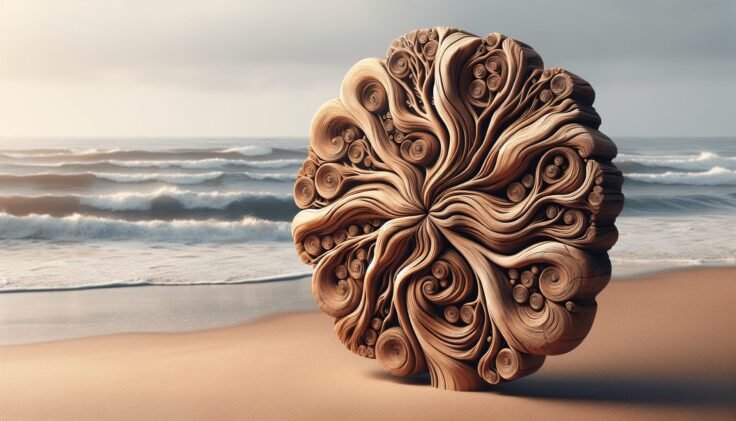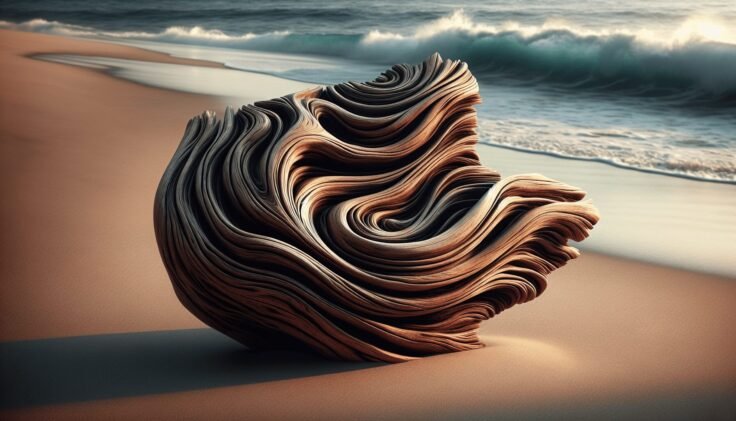Have you ever strolled along the beach, admiring the unique and captivating pieces of driftwood scattered along the shore? Driftwood comes in various shapes and sizes, each piece telling a different story about its journey through water and time. For those with a creative spirit, these seemingly random pieces of wood offer a world of possibilities. Whether crafting furniture, creating art, or simply adding a rustic touch to your décor, learning how to cut and work with driftwood can open a world of creative potential.
Understanding Driftwood
Understanding the nature of driftwood is the first step in mastering the art of cutting and crafting with it. This unique material is wood that has been washed onto the shore by the sea, rivers, or lakes. Its distinct characteristics come from the journey it undertakes, exposed to water, sand, and weathering elements.
The Formation of Driftwood
Driftwood originates from trees or branches that have been separated from their original position. Over time, exposure to the elements such as water currents, sand erosion, and sun bleaching transforms it into the distinctive pieces you find along the beach. Its ragged edges and worn appearance add to its charm, making each piece truly unique.
Types of Driftwood
Driftwood can come from a variety of tree species, each imparting its own texture and color. Common sources of driftwood include:
- Hardwoods: Such as oak and cherry, which are robust and often feature intricate grains.
- Softwoods: Like pine and cedar, known for their light weight and softness, making them easier to work with.
- Exotic Woods: Occasionally, you might find pieces from tropical palms or unusual species that add a unique aesthetic.
Understanding the type of driftwood you are dealing with is essential, as it influences both the cutting process and how you might use it.
Preparing to Cut Driftwood
Before you start cutting, preparation is crucial. The right tools and techniques will ensure that your driftwood cutting process is both safe and effective.
Selecting the Right Driftwood
Choosing the right driftwood is an art in itself. Look for pieces that are:
- Free of rot: Avoid wood that feels spongy or has a musty smell, as it’s likely unusable.
- Interesting shape: Choose pieces with natural curves or unusual shapes that match your intended project.
- Appropriate size: Ensure the piece is manageable for your cutting capabilities and the tools you have.
Cleaning Driftwood
Driftwood often carries remnants of its ocean journey, such as salt, sand, and debris. Clean it properly to preserve its quality and make cutting easier:
- Soak: Immerse the driftwood in fresh water for several days, changing the water daily to remove salt and debris.
- Scrub: Use a stiff brush to scrub off dirt and loose particles.
- Dry: Let the driftwood dry completely in a shaded area to prevent cracking under direct sunlight.
Tools You’ll Need
The right tools make all the difference:
- Hand saw: For precise cutting of smaller pieces.
- Power saw: A jigsaw or band saw for larger, more intricate cuts.
- Chisel: For detailed shaping.
- Sanding tools: To smooth rough edges.
- Protective gear: Such as gloves and goggles to ensure safety during cutting.

Techniques for Cutting Driftwood
Once you’re prepared, it’s time to start cutting. Selecting the right technique can help you achieve the shape and size you desire while maintaining the driftwood’s natural aesthetics.
Cutting Techniques
Straight Cuts: Use a hand saw or power saw to make simple, straight cuts. Perfect for creating basic shapes or adjusting length.
Curved Cuts: A jigsaw is ideal for following the natural curves and shapes of the wood, allowing you to maintain its organic look.
Detail Work: Use chisels for precision work and to carve intricate designs or patterns.
Safety Tips for Cutting
Safety should always be your top priority. Here are some essential tips:
- Secure the wood: Make sure the driftwood is stable while cutting to avoid accidents.
- Protective gear: Always wear gloves and goggles.
- Cut slowly: Take your time, especially with power tools, to maintain control and precision.
- Check tool conditions: Ensure all tools are in good working order to prevent mishaps.
Utilizing Driftwood in Creative Projects
With your driftwood pieces ready, the possibilities for creative use are endless. From simple home décor to complex furniture pieces, driftwood can enhance any living space with its natural charm.
Crafting Home Décor
Driftwood is perfect for adding a rustic touch to home décor:
- Wall Art: Arrange smaller pieces into patterns or designs.
- Table Centerpieces: Use longer, flat pieces to create eye-catching centerpieces.
- Mirrors and Frames: Frame existing mirrors or pictures with driftwood for a natural look.
Making Furniture
For the more ambitious, driftwood can be transformed into unique pieces of furniture:
- Tables: Large, sturdy pieces can serve as tabletops or table legs.
- Chairs and Benches: Use robust driftwood to build seating with a natural aesthetic.
- Shelves: Attach driftwood to walls for rustic shelving.
Artistic Creations
For artists, driftwood is a versatile medium:
- Sculptures: Carve or assemble pieces into unique sculptures.
- Jewelry: Smaller pieces can be polished and turned into pendants or earrings.
- Ornaments: Create seasonal decorations with a natural twist.

Caring for Driftwood Creations
Once you’ve created your driftwood masterpiece, proper maintenance will ensure its longevity and beauty.
Preserving Driftwood
To protect your driftwood project:
- Sealants: Use a water-based sealant to protect from moisture and dirt.
- Regular Cleaning: Dust regularly to keep surfaces clean and bright.
- Avoid Excessive Sunlight: Prolonged exposure can cause fading and cracking.
Repair and Restoration
Driftwood, like any wood, can wear over time. For repairs:
- Fill Cracks: Small cracks can be filled with wood filler and sanded smoothly.
- Resealing: Periodically reseal to protect and refresh the wood.
- Mildew Management: Keep in a dry, well-ventilated space to prevent mildew.
Conclusion
Your journey with driftwood doesn’t just end at cutting. It’s about appreciating the uniqueness of each piece, understanding how to work with it, and imaginatively transforming it into something new and extraordinary. Each crafted item has the opportunity to speak to its personal history, marked by the ebb and flow of water, wind, and time, much like the people who transform it. So, as you step onto the shore next time, look at the driftwood with new eyes, recognizing both what it has been and what it could become with a few creative touches.